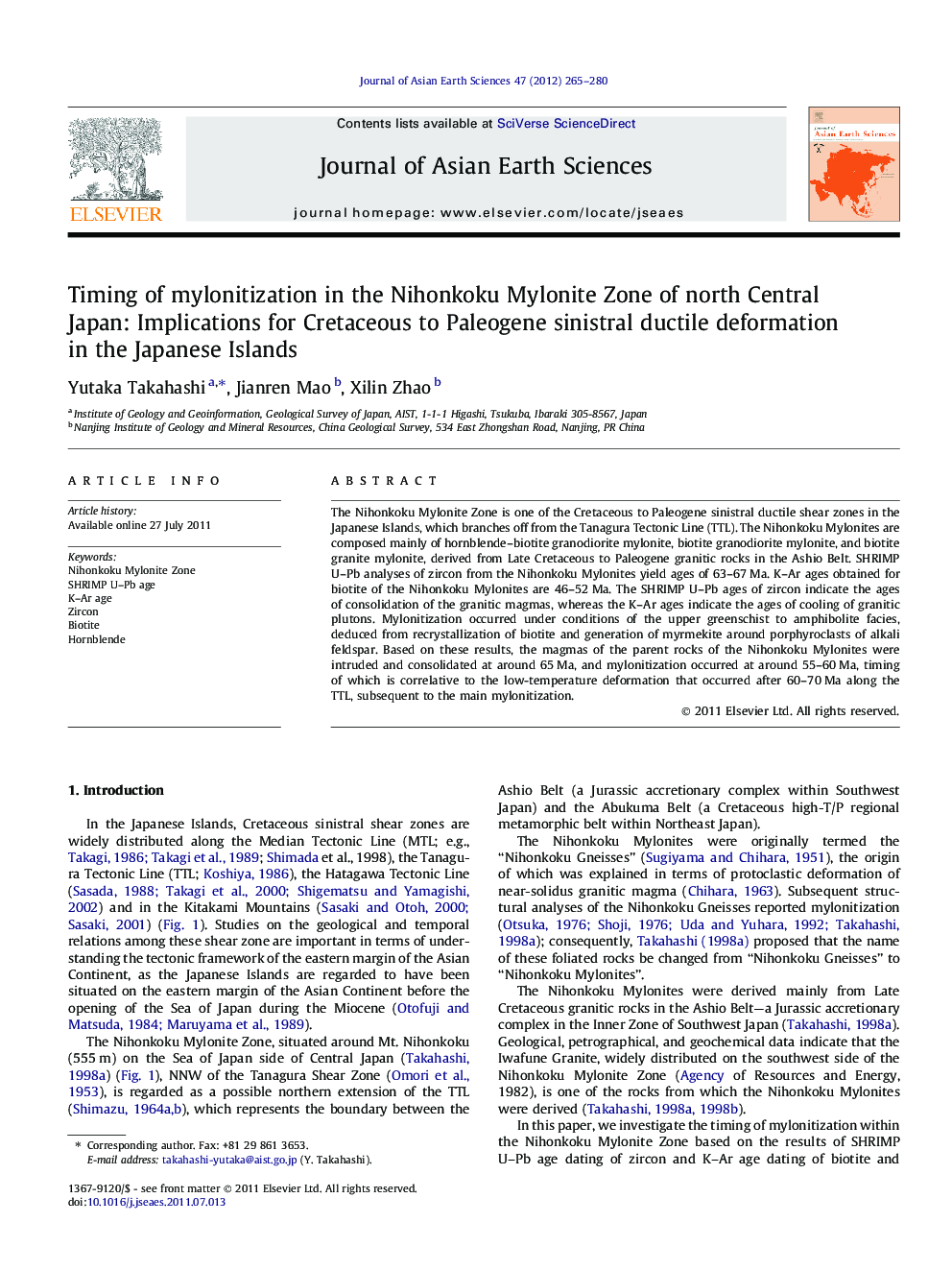| Article ID | Journal | Published Year | Pages | File Type |
|---|---|---|---|---|
| 4731613 | Journal of Asian Earth Sciences | 2012 | 16 Pages |
The Nihonkoku Mylonite Zone is one of the Cretaceous to Paleogene sinistral ductile shear zones in the Japanese Islands, which branches off from the Tanagura Tectonic Line (TTL). The Nihonkoku Mylonites are composed mainly of hornblende–biotite granodiorite mylonite, biotite granodiorite mylonite, and biotite granite mylonite, derived from Late Cretaceous to Paleogene granitic rocks in the Ashio Belt. SHRIMP U–Pb analyses of zircon from the Nihonkoku Mylonites yield ages of 63–67 Ma. K–Ar ages obtained for biotite of the Nihonkoku Mylonites are 46–52 Ma. The SHRIMP U–Pb ages of zircon indicate the ages of consolidation of the granitic magmas, whereas the K–Ar ages indicate the ages of cooling of granitic plutons. Mylonitization occurred under conditions of the upper greenschist to amphibolite facies, deduced from recrystallization of biotite and generation of myrmekite around porphyroclasts of alkali feldspar. Based on these results, the magmas of the parent rocks of the Nihonkoku Mylonites were intruded and consolidated at around 65 Ma, and mylonitization occurred at around 55–60 Ma, timing of which is correlative to the low-temperature deformation that occurred after 60–70 Ma along the TTL, subsequent to the main mylonitization.
► The Nihonkoku Mylonite Zone is a Cretaceous to Paleogene sinistral ductile shear zone in northern Japan. ► SHRIMP U–Pb ages of zircon from the Nihonkoku Mylonites are 63–67 Ma. ► K–Ar ages of biotite for the Nihonkoku Mylonites are 46–52 Ma. ► The magmas of the parent rocks of the Nihonkoku Mylonites were intruded and consolidated at around 65 Ma. ► The mylonitization occurred at around 55–60 Ma.
